
A tireless traveler, Vasily Vasilyevich Vereshchagin went to his first trip to India in the spring of 1874 and spent two years studying various regions of the country and also went to Tibet. He was accompanied by his wife, Elizaveta Kondratievna, who kept track notes, which later became the basis for the book of both Vereshchagins about their joint trip. In 1882-1883, the artist undertook a second journey through India, lasting more than four months.
For both times in the country, Vereshchagin visited Bombay on the west coast and in Madras on the east coast of India, in the center of India – the cities of Agra, Delhi and others, visited the famous ancient temples of Ellora, carved into the rocks, and the young by the Indian standards, the city of Jaipur, created in the XVIII century by the will of the ruler-maharaja on a mathematically strict plan. He traveled to the Western Himalayas – to Muslim Kashmir, the crossroads of the ancient ways of Asia, and to Ladak, the center of Buddhist monasteries and memorable stupas, an area called “small Tibet”. He traveled to the Eastern Himalayas – the kingdom of Nepal and the “land of heavenly steps” of Sikkim, made an ascent to a great height on one of the world’s greatest mountains – the five-headed Kanchenjung.
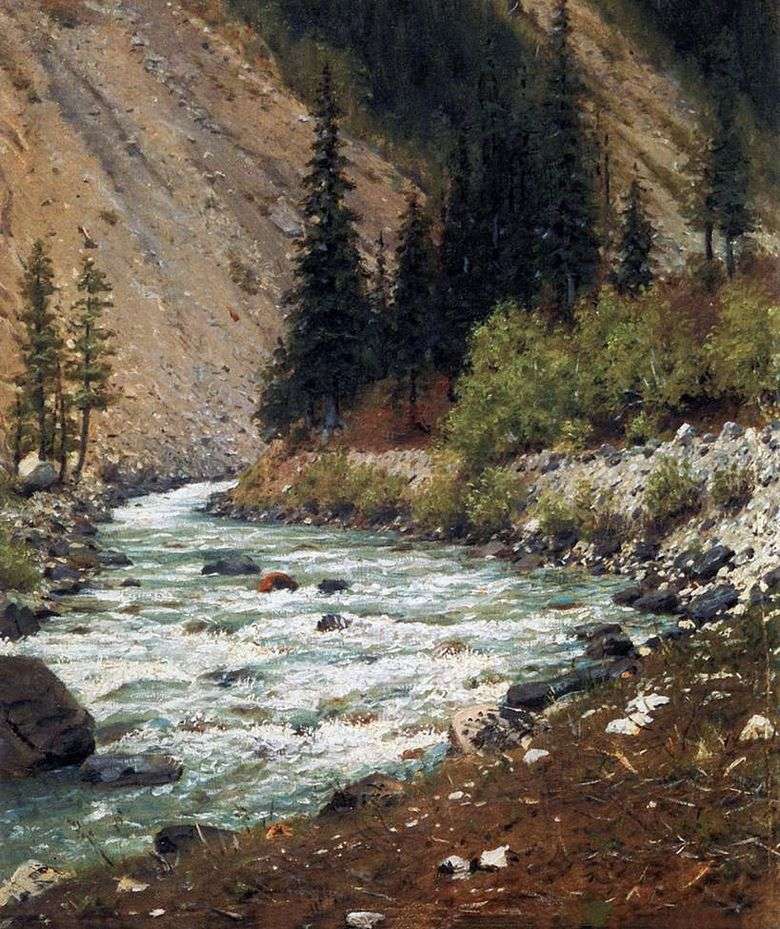 Arroyo de montaña en Cachemira – Vasily Vereshchagin
Arroyo de montaña en Cachemira – Vasily Vereshchagin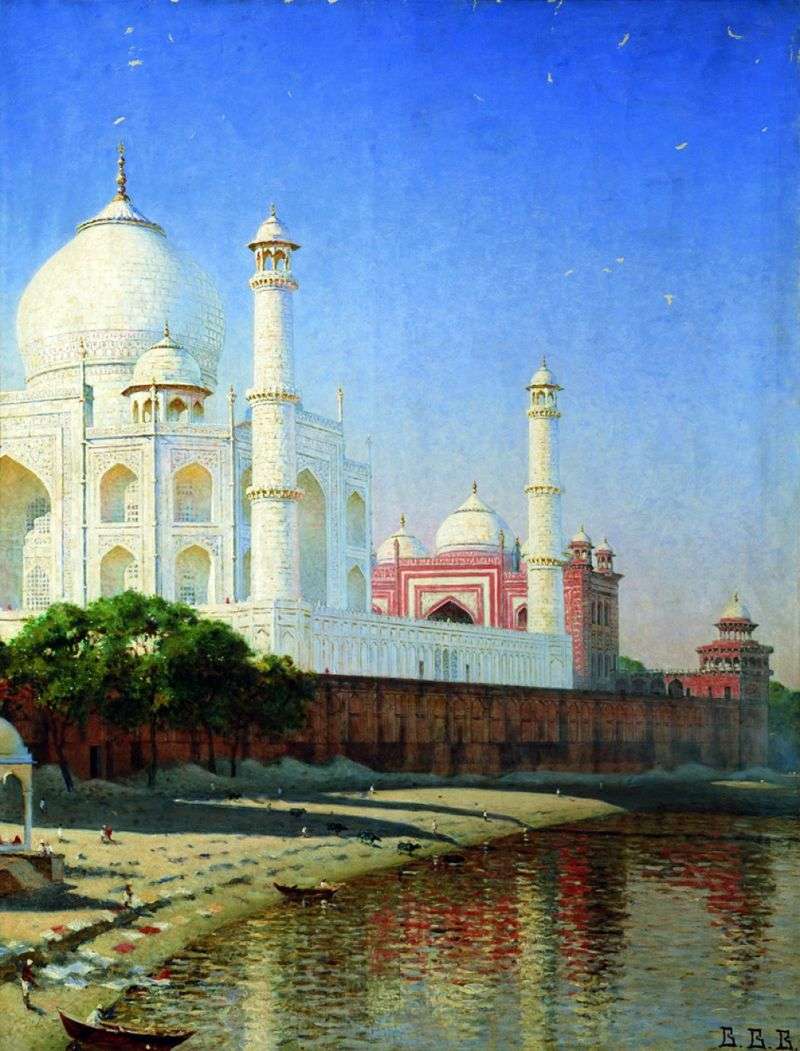 Mausoleum of the Taj Mahal by Vasily Vereshchagin
Mausoleum of the Taj Mahal by Vasily Vereshchagin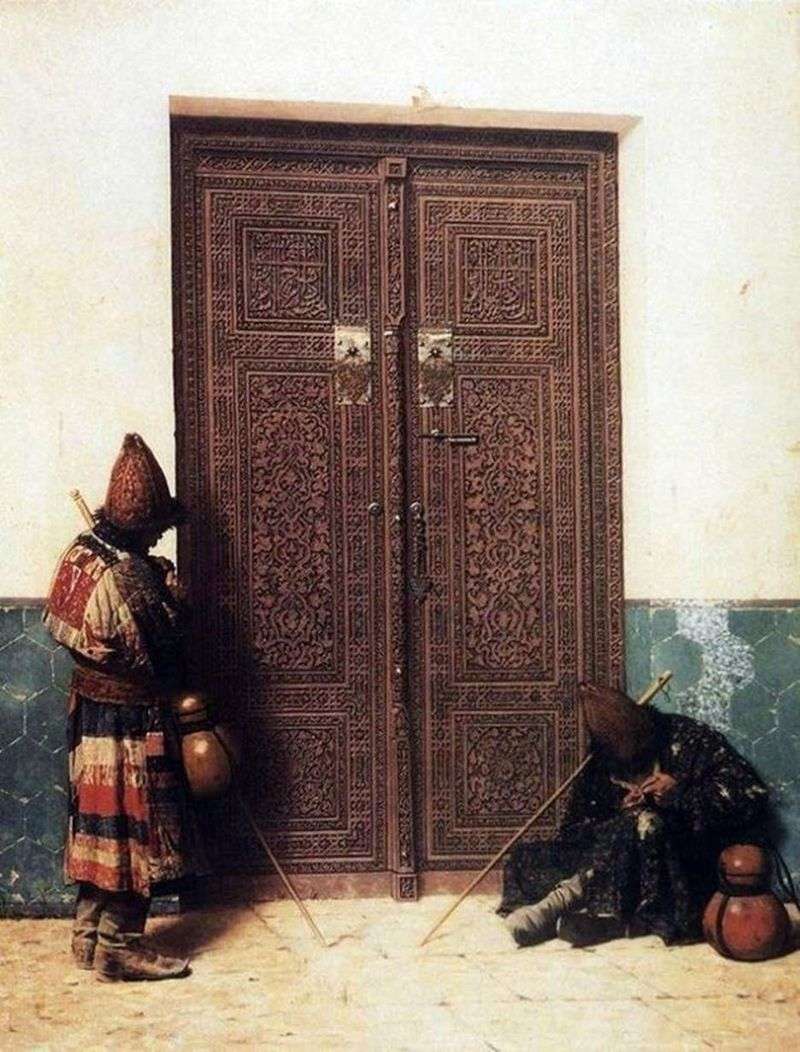 At the door of the mosque by Vasily Vereshchagin
At the door of the mosque by Vasily Vereshchagin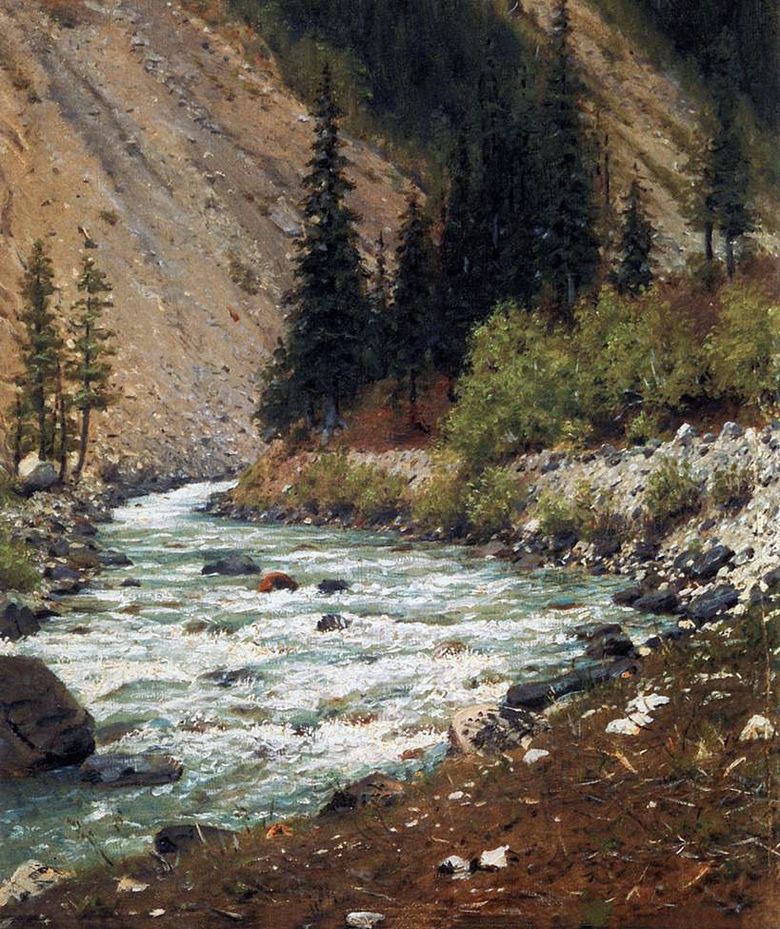 Ruisseau de montagne au Cachemire – Vasily Vereshchagin
Ruisseau de montagne au Cachemire – Vasily Vereshchagin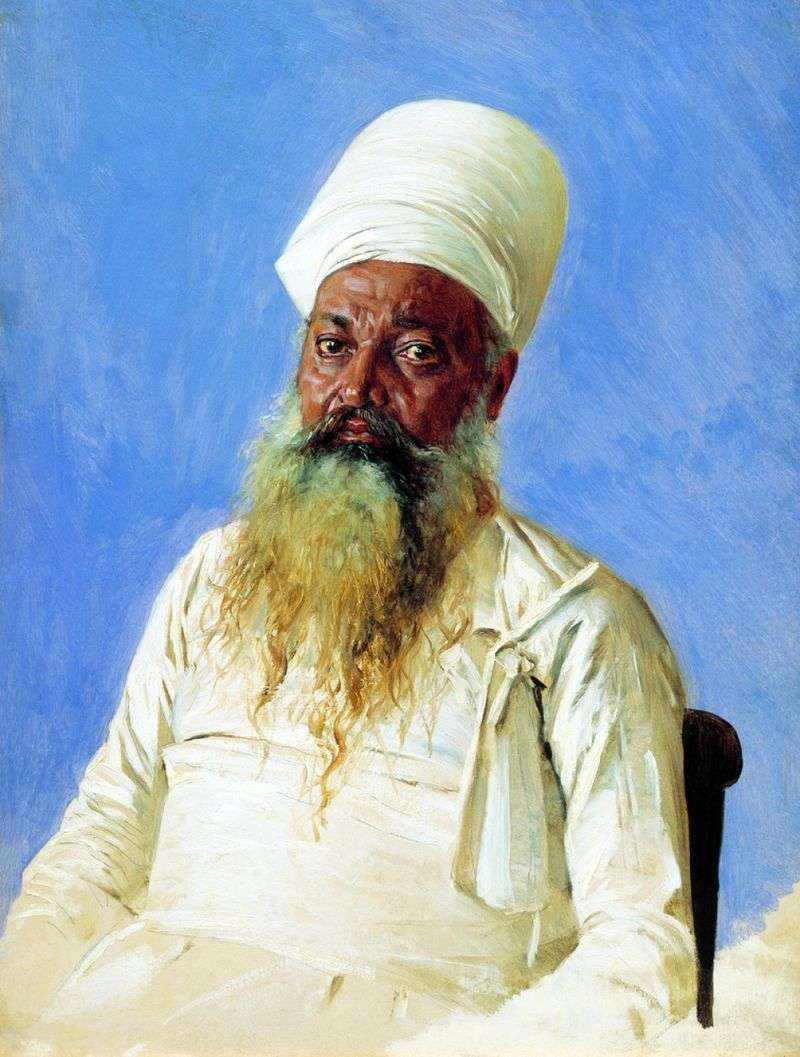 Priest of the Pars (fire-worshiper). Bombay by Vasily Vereshchagin
Priest of the Pars (fire-worshiper). Bombay by Vasily Vereshchagin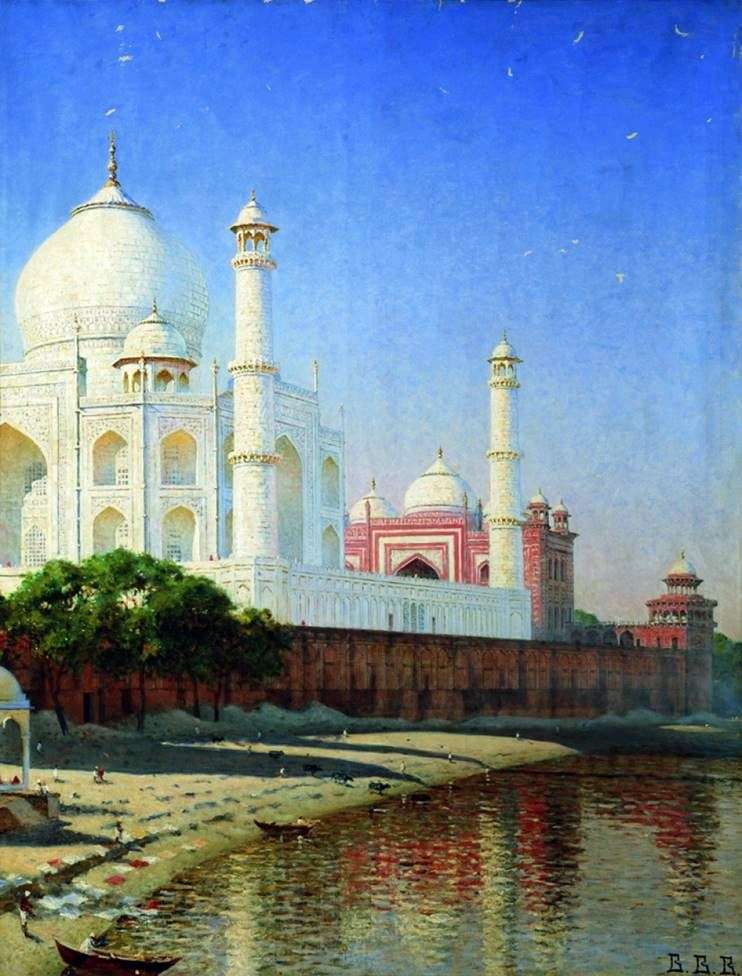 Mausoleo Taj Mahal – Vasily Vereshchagin
Mausoleo Taj Mahal – Vasily Vereshchagin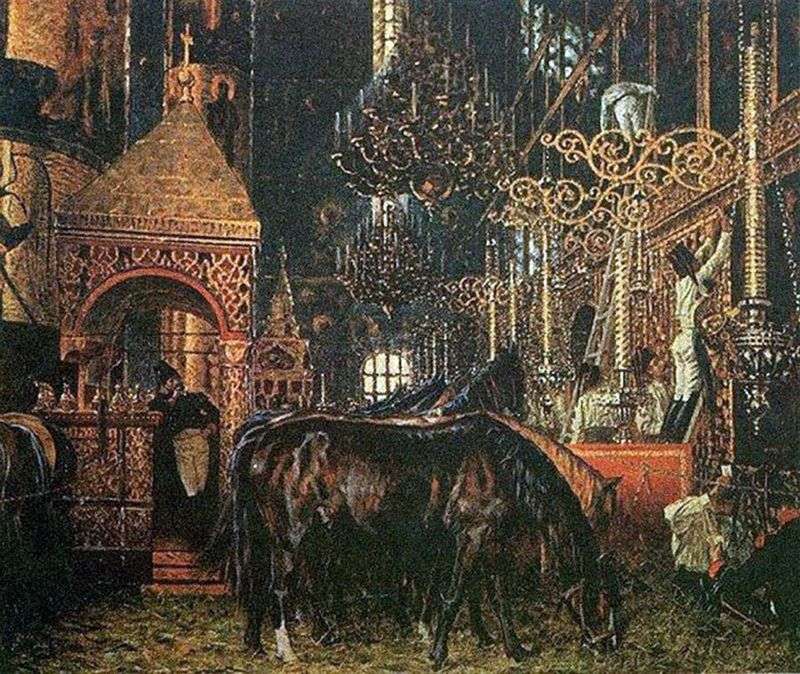 In the Assumption Cathedral by Vasily Vereshchagin
In the Assumption Cathedral by Vasily Vereshchagin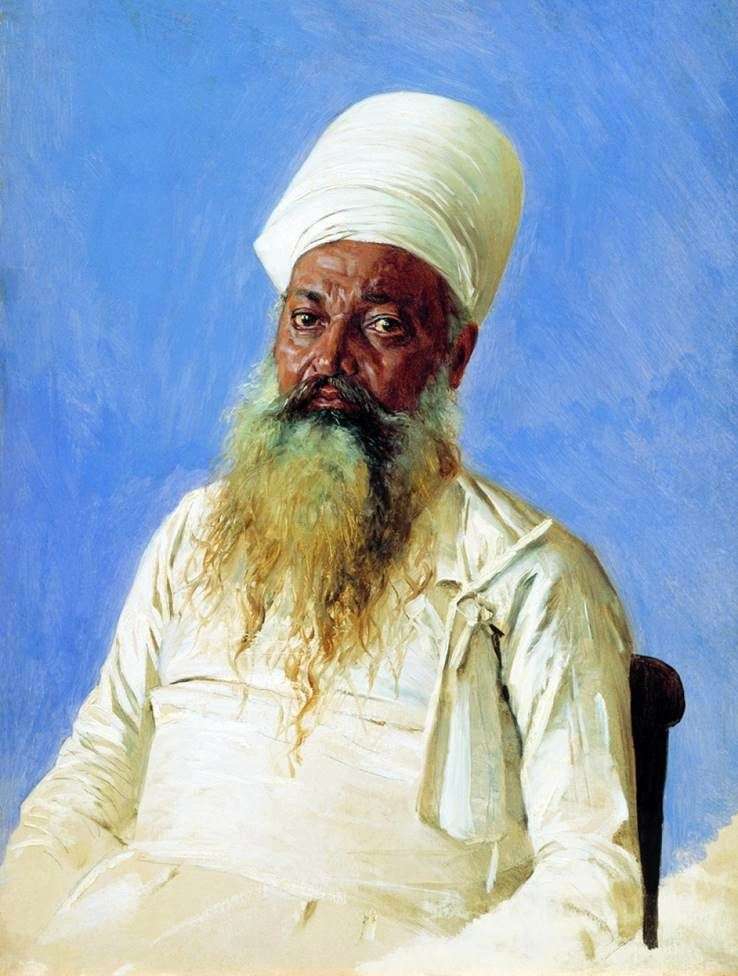 Pars sacerdote (adorador del fuego).Bombay – Vasily Vereshchagin
Pars sacerdote (adorador del fuego).Bombay – Vasily Vereshchagin